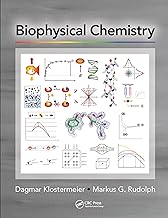Summary of "Biophysical Chemistry 2018 - Lecture 3"
Summary of “Biophysical Chemistry 2018 - Lecture 3”
This lecture covers foundational concepts in biophysical chemistry, focusing on thermodynamics, molecular interactions, protein folding, and the physical chemistry underlying biomolecular behavior. The professor integrates theory with practical lab work and emphasizes the importance of understanding free energy, entropy, and temperature from a physical chemistry perspective.
Main Ideas and Concepts
1. Course Logistics and Lab Work
- Lab reports and course registration issues were briefly discussed.
- The lab exercise aimed to give students intuition about the Boltzmann distribution using simple systems before applying it to proteins.
2. Fundamental Molecular Interactions
- Electrostatics, hydrogen bonds, van der Waals (Lennard-Jones) interactions, and their relative strengths.
- Understanding these interactions is crucial to describing protein structure and behavior.
- Electrostatics dominate short-range interactions; van der Waals forces are weaker but accumulate at long range.
3. Energy, Entropy, and Free Energy
- The central thermodynamic equation: [ F = E - TS ] where:
- (F) = free energy
- (E) = internal energy
- (T) = temperature
- (S) = entropy
- Energy ((E)) is easier to calculate directly (e.g., quantum chemistry), but entropy ((S)) is more complex because it involves counting microstates.
- Temperature is a subtle, non-trivial concept defined thermodynamically as the derivative of energy with respect to entropy at equilibrium.
- Difference between Helmholtz free energy ((F)) and Gibbs free energy ((G)) explained, including when each is appropriate (constant volume vs. constant pressure).
- Intensive vs. extensive properties: energy and volume scale with system size; temperature does not.
4. Boltzmann Distribution and Energy Landscapes
- The Boltzmann distribution describes the probability of a system occupying states of different energies.
- Energy landscapes visualize how free energy varies with molecular conformations.
- Concepts of microstates and macrostates, and how entropy arises from counting microstates.
- Detailed balance condition in equilibrium relates forward and backward transition probabilities between states.
5. Hydrophobic Effect and Protein Folding
- Hydrophobic molecules do not dissolve well in water due to entropic penalties caused by structuring of water molecules around them.
- Hydrogen bonds in water largely remain intact upon melting ice; melting is driven by entropy gain.
- The hydrophobic effect is primarily entropic, driven by water molecules gaining freedom when hydrophobic residues cluster.
- Protein folding is driven mainly (~90%) by the hydrophobic effect, with secondary structure formation and packing contributing less.
- Proteins fold by burying hydrophobic residues inside and exposing hydrophilic residues outside.
6. Hydrogen Bonds and Solvation
- Hydrogen bond formation is energetically favorable (negative (\Delta E)) but can reduce entropy.
- In proteins, hydrogen bonds between residues replace hydrogen bonds with water, often leading to subtle net free energy changes dominated by entropy.
- Partition coefficients measure solubility and relate to free energy differences between phases.
7. Electrostatics in Proteins
- Electrostatic interactions are modulated by the dielectric constant (\varepsilon) of the medium.
- Water has a high dielectric constant (~80), strongly screening charges; protein interiors have low dielectric constants (~2–4), making electrostatics stronger inside.
- Charged residues are rare inside proteins unless paired (salt bridges) or protonation states change.
- Electrostatic energy between charges depends inversely on distance and dielectric constant.
8. Energy Scales and Units
- (k_B T) (Boltzmann constant times temperature) is the natural energy scale (~0.6 kcal/mol at room temperature).
- Energies are often compared to (k_B T) to estimate likelihood of transitions (e.g., bond rotations).
- Barriers much larger than (k_B T) are rarely crossed spontaneously.
9. Molecular Motions and Timescales
- Atoms in proteins vibrate thermally on femtosecond to picosecond timescales.
- Larger conformational changes (e.g., folding) occur on microsecond to second timescales.
- Proteins spend most time fluctuating around energy minima, occasionally transitioning between states.
10. Molten Globule State
- Intermediate state in protein folding with hydrophobic core formed but lacking detailed secondary structure.
- Highly dynamic and flexible compared to the fully folded state.
11. Practical Recommendations
- Work through equations by hand to understand them deeply.
- Develop intuition for energy magnitudes and units.
- Use simple models and thought experiments to grasp complex thermodynamic concepts.
Methodologies and Instructional Notes
- Integration of theoretical concepts with practical lab exercises to build intuition.
- Emphasis on understanding fundamental physical chemistry principles underlying biomolecular behavior.
- Encouragement to engage actively with equations and models for deeper comprehension.
Category
Educational



